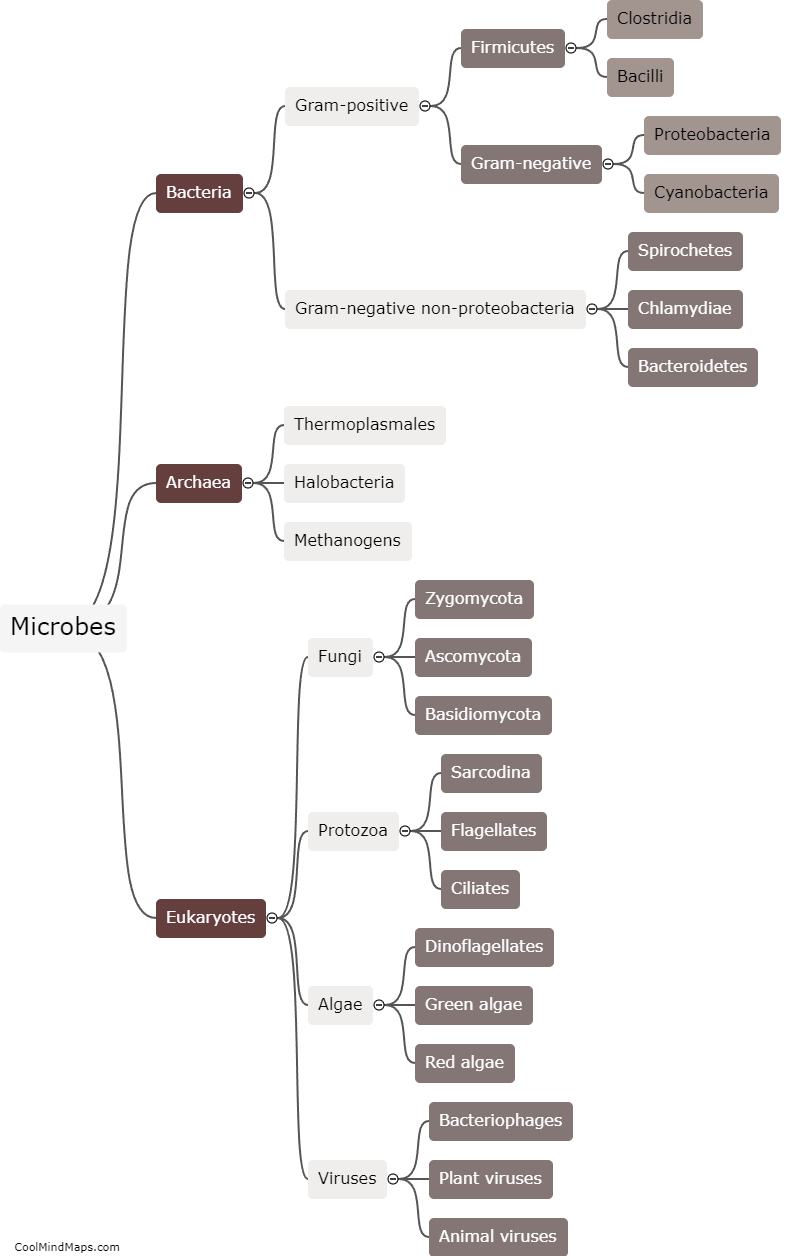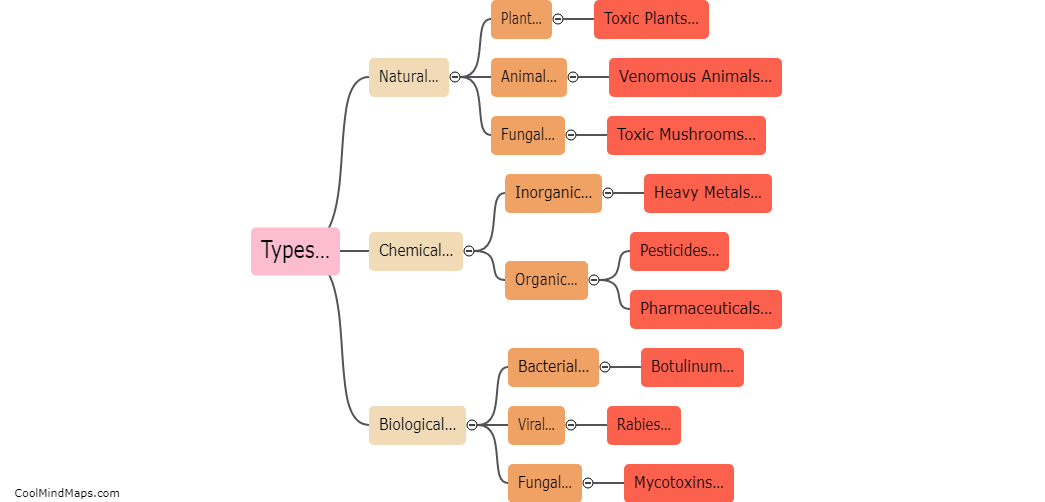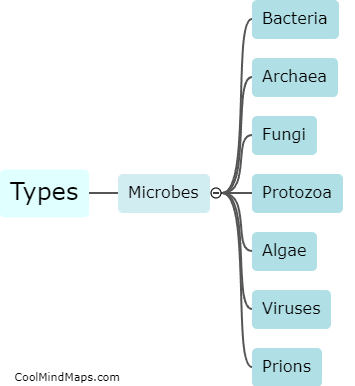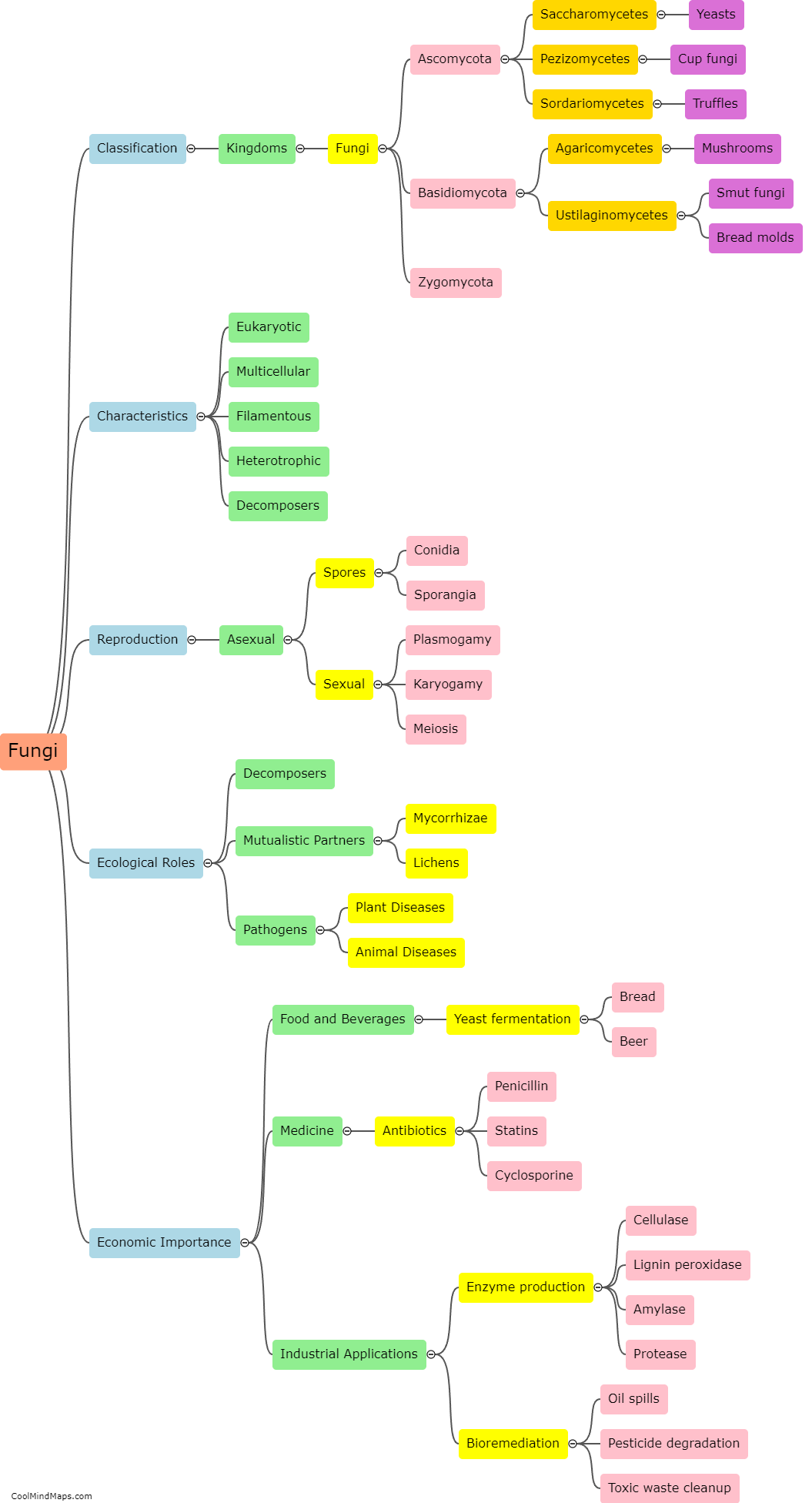What are the major types of microbes?
Microbes, also known as microorganisms, are tiny living organisms that are found virtually everywhere on Earth. There are several major types of microbes, including bacteria, viruses, fungi, protozoa, and algae. Bacteria are single-celled organisms that can be found in diverse environments, and some are beneficial while others are pathogenic. Viruses are non-living entities that depend on host cells to replicate and cause various diseases. Fungi are multi-celled organisms that can be either beneficial, like certain types of yeast used in food production, or harmful, such as molds that can cause allergies. Protozoa are single-celled organisms that can be found in water and soil, some of which can cause diseases like malaria and giardiasis. Lastly, algae are plant-like organisms that can range from single-celled to multi-cellular forms, and can be found in water and moist environments, providing oxygen and being a significant part of the food chain. Understanding the major types of microbes is crucial for medical, agricultural, and environmental purposes, as they play a major role in ecosystems and human health.

This mind map was published on 8 October 2023 and has been viewed 94 times.











